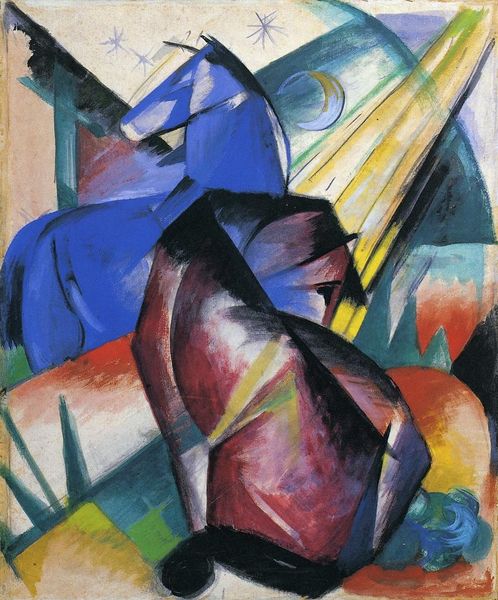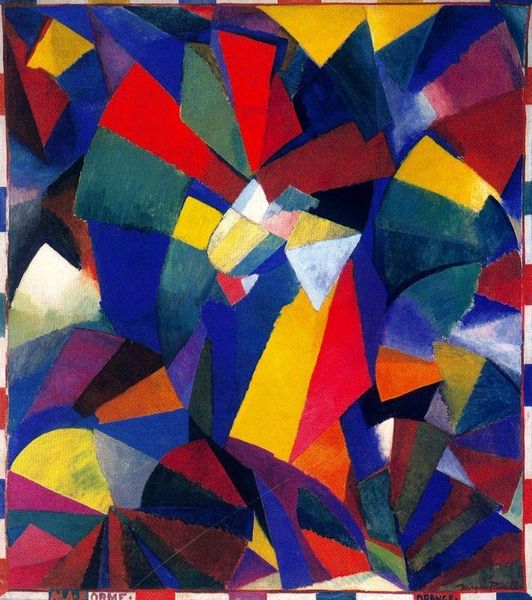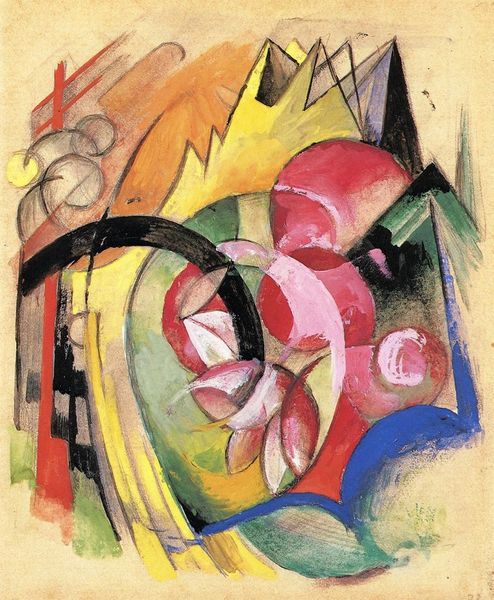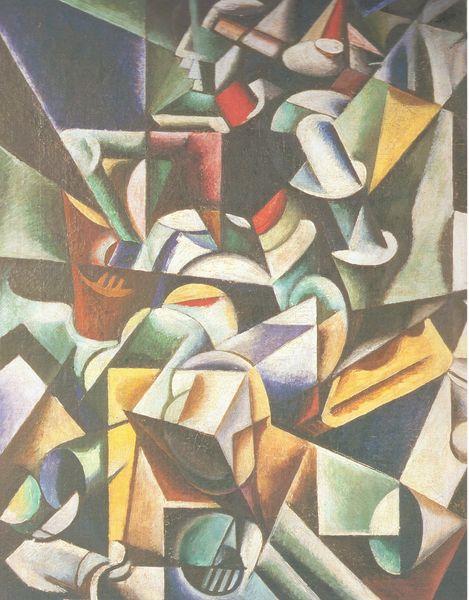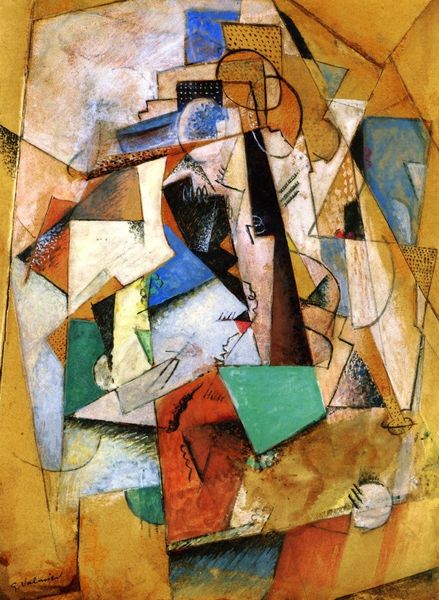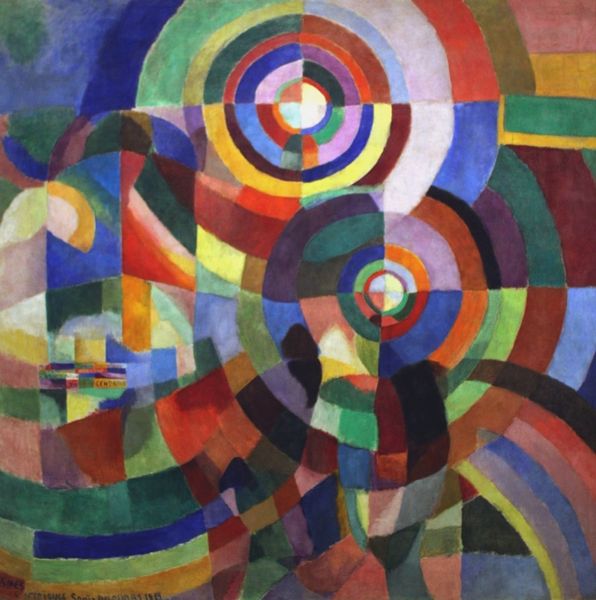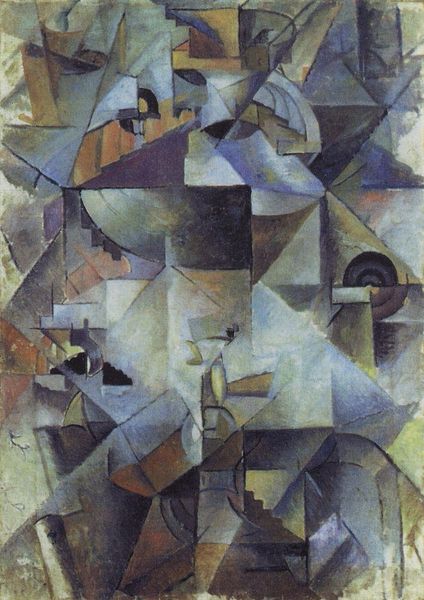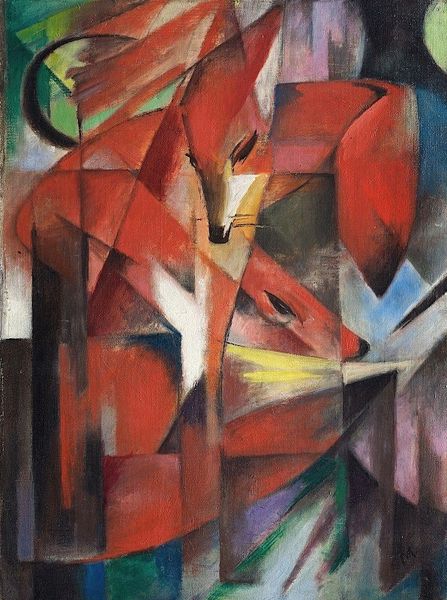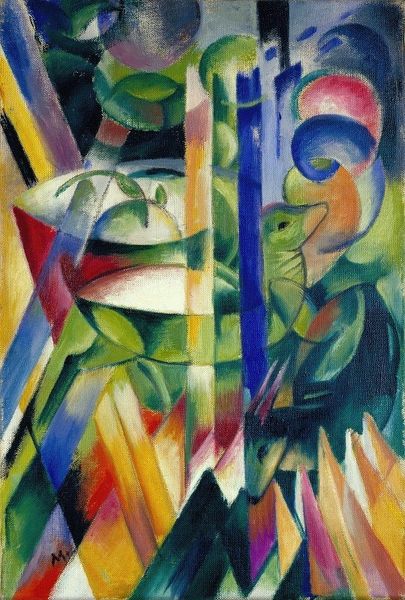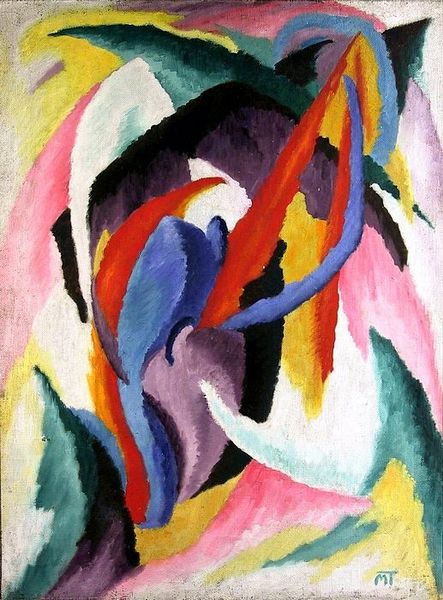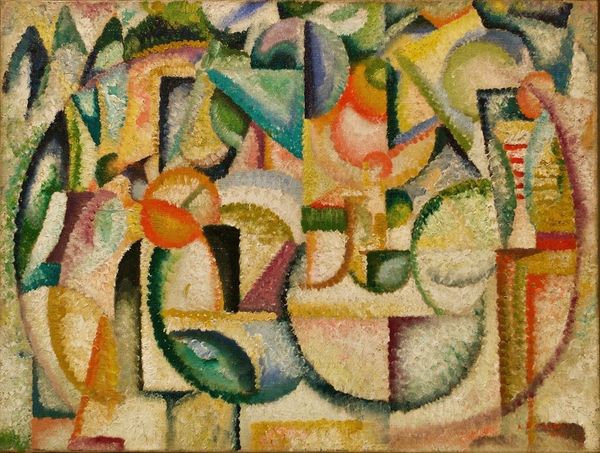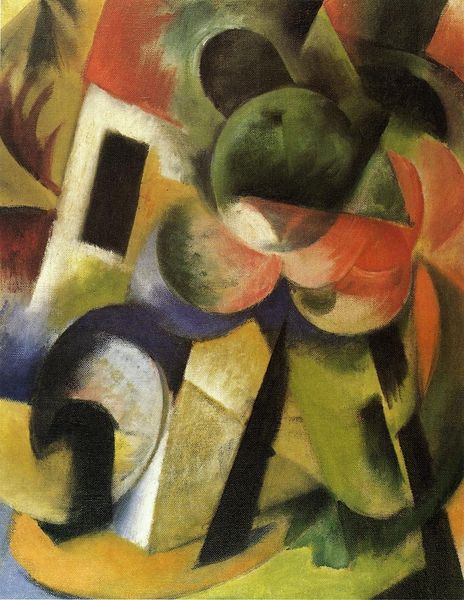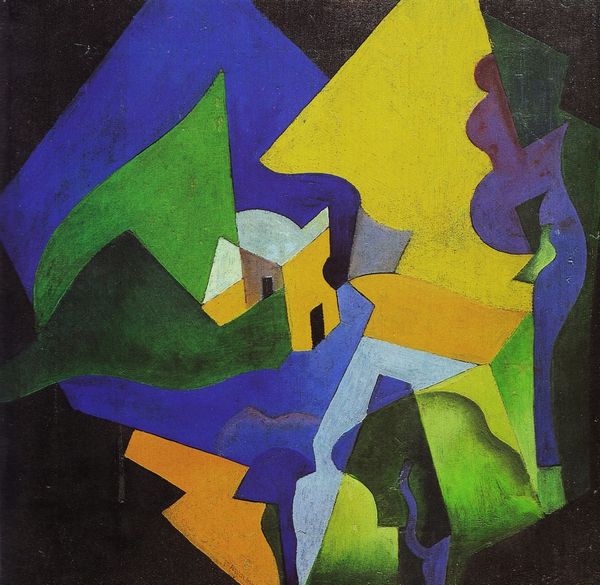
painting, oil-paint
#
cubism
#
abstract painting
#
painting
#
oil-paint
#
constructivism
#
geometric
#
abstraction
#
modernism
Copyright: Public domain US
Curator: Here we have Vadym Meller’s "Composition" from 1918, an oil painting that sits squarely within both Cubist and Constructivist traditions. Editor: Wow, it really pops, doesn't it? Like a stained-glass window that decided to explore the joys of deconstruction. I see a clash of color and form. Playful, yet slightly disorienting. Curator: That disorienting effect is characteristic of Cubism's challenge to traditional perspective. Notice how Meller fractures the pictorial space, presenting multiple viewpoints simultaneously. It’s as though we’re seeing the subject from all angles at once. The grey also works like it could resemble gears or an interior machine. Editor: Absolutely. But the vibrant blues, oranges, and greens keep it from feeling too cold or mechanical. I get a sense of underlying energy. Like the city waking up but its dreams haven't ended, or maybe they are being painted in reality. It dances right on that edge between chaos and harmony. Curator: And that tension, I think, speaks directly to the historical context. 1918 was a pivotal year, marking the end of World War I and a moment of immense social and political upheaval. Artists were grappling with new ways of representing a world irrevocably changed. Meller, working in Ukraine, was deeply involved in avant-garde movements pushing for radical artistic expression. Editor: It feels like they are not sure if things can even fit together. Knowing that makes those clashing colors even more powerful, doesn’t it? As if Meller’s using this burst of creative energy to scream that now everything will get even wilder. There's a pulse to this, a fragmented but vibrant hope. Curator: Precisely. Constructivism sought to build new visual languages for a new society. In that sense, "Composition" embodies a utopian impulse, seeking order amidst fragmentation. It serves as a reminder of how art mirrors and anticipates shifts in society. Editor: I appreciate knowing how much more these weren't trying to just show something, but show the spirit that lived amongst the subject. Now, the puzzle of shapes feels deliberate and the intensity starts to have intention and rhythm. Curator: Well, hopefully that adds a new lens when appreciating abstract works from the Modernist era. Editor: Yeah, absolutely. Understanding the spirit and place behind the colors will probably add another splash to its meaning to others.
Comments
No comments
Be the first to comment and join the conversation on the ultimate creative platform.
